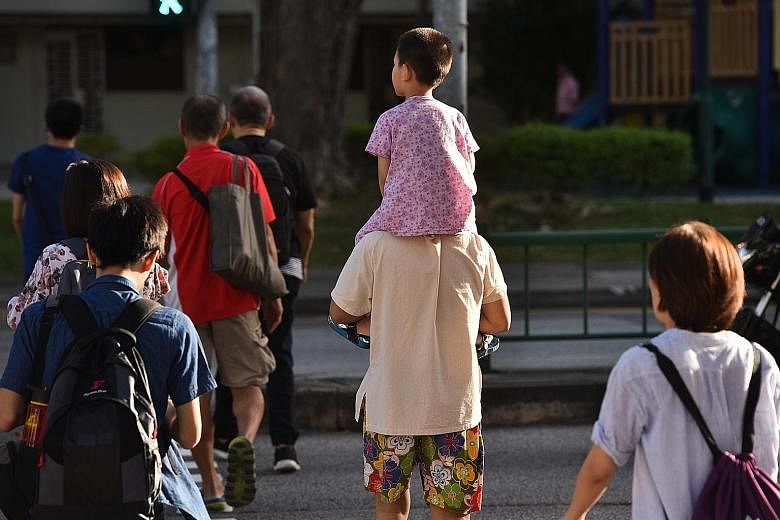Singapore families earned more from work per person last year, with some top earners surpassing the median growth rate because they were likely in industries plugged into the new digital economy.
The median monthly income per household member rose to $2,792 last year, 3.4 per cent more on a dollar basis or a 3 per cent increase after taking inflation into account, according to the latest household income figures released by the Department of Statistics yesterday.
The increase was especially pronounced for families in the top 11 per cent to 29 per cent range (the 71st to 90th percentiles), who saw their real incomes rise by 4 per cent for each household member.
Those in the bottom 70 per cent saw their incomes grow from between 2.5 per cent and 3.4 per cent per household member, while the top 10 cent saw their incomes rise 2.3 per cent per household member.
The average monthly income per member ranged from $570 for the bottom 10 per cent to $13,581 for the top 10 per cent.
Household income from work includes Central Provident Fund contributions from employers, but excludes income from other sources such as dividends and rent. It also does not count maids' wages.
Altogether, families with at least one working member - which make up almost nine-tenths of all households here - saw real median employment income grow by 2.6 per cent to $9,293 last year, compared with 1.5 per cent growth in 2017.

Economists attributed the across-the-board increase to the economy logging better-than-expected gro-wth in the first half of last year, as well as the relatively low inflation.
As for why the top 11 per cent to 29 per cent of families saw incomes grow more, CIMB Private Banking economist Song Seng Wun said employed people in these households may be professionals in sectors with higher demand, like IT and fintech.
Last year also saw the Gini coefficient - a measure of income inequality from zero to one, with zero being most equal - stay largely the same at 0.458, compared with 2017's 0.459. The Gini coefficient last year matched that of 2016, which was the lowest in a decade. It dropped to 0.404 after adjusting for government transfers and taxes.
Public schemes gave out an average of $4,494 to each resident household member last year. This was $9 lower, on average, than in 2017, due to a drop in MediShield Life transitional subsidies and the absence of one-off grants like NS50 vouchers.
Residents in one-and two-room Housing Board flats continued to receive, on average, $10,347 in such transfers - more than double those in other types of properties.
About 12.1 per cent of households were made up entirely of people who were not working, which was mainly due to the rising share of ageing Singaporeans.
National University of Singapore sociologist Tan Ern Ser noted that the Gini coefficient has been stable over the past few years, after it came down from the peak in 2012. "It could go lower, but through something we are less inclined to try in a big way - redistributive measures."
He said another means of minimising inequality is by raising the bottom through skills upgrading and creating more value-added jobs, adding: "However, this takes time."
News of the income growth was of cold comfort to a 32-year-old customer relations manager who wanted to be known only as Mrs Tan. The mother of a three-year-old boy received a pay rise of $320 last year, which she said worked out to an increase of about 7 per cent.
"Percentage-wise, I guess you can say it is good. But when you add up the cost of raising your kid and taking care of your parents, it does not feel like we will be relaxing any time soon," she said.

